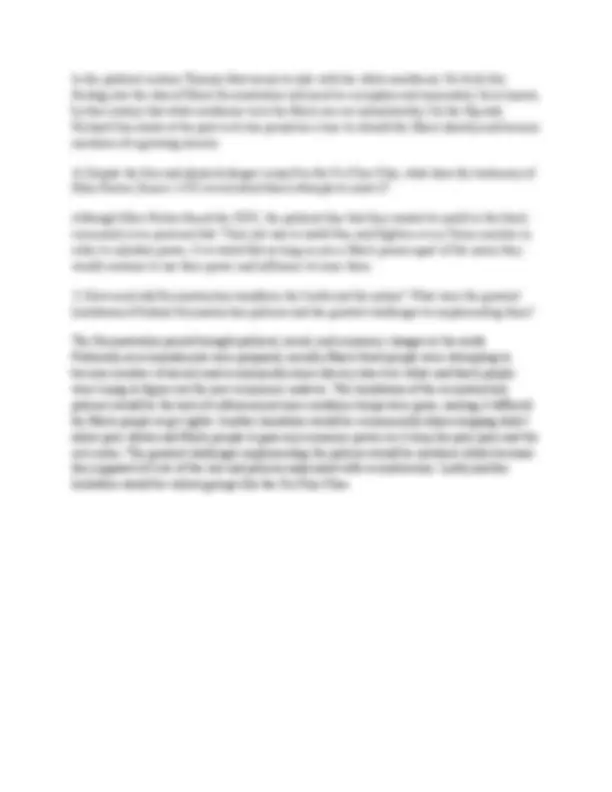



Study with the several resources on Docsity

Earn points by helping other students or get them with a premium plan


Prepare for your exams
Study with the several resources on Docsity

Earn points to download
Earn points by helping other students or get them with a premium plan
Community
Ask the community for help and clear up your study doubts
Discover the best universities in your country according to Docsity users
Free resources
Download our free guides on studying techniques, anxiety management strategies, and thesis advice from Docsity tutors
A summary of the lecture for Chapter 14 using primary sources
Typology: Study Guides, Projects, Research
1 / 2

This page cannot be seen from the preview
Don't miss anything!


Serenity Brockman 11/26/ Proffesor Knies PUA # Using the Chapter 14 Primary Source Project answer these 5 questions (from the chapter):
In the political cartoon Thomas Nast seems to side with the white sourtherns. He feels like feeding into the idea of Black Reconstrution will need to corruption and immorality. Its is known by this cartoon that white southerns view the Black race as untrustworthy. On the flip side Richard Cain looks at the post civil war period as a time to rebuild the Black identity and become members of a growing society.